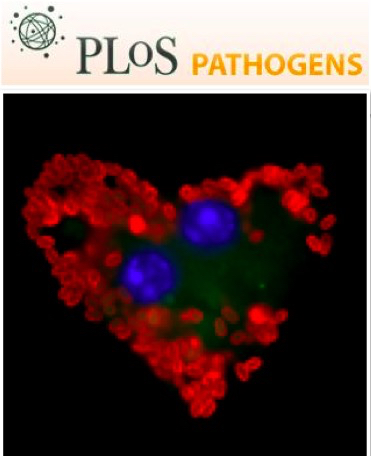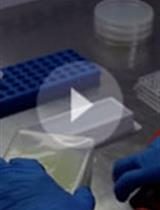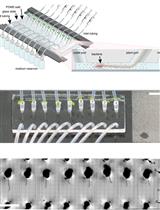- EN - English
- CN - 中文
Hyaloperonospora arabidopsidis (Downy Mildew) Infection Assay in Arabidopsis
拟南芥中活体营养型卵菌(霜霉病)的感染分析
发布: 2015年10月20日第5卷第20期 DOI: 10.21769/BioProtoc.1627 浏览次数: 16995
评审: Arsalan DaudiAnonymous reviewer(s)
Abstract
Hyaloperonospora arabidopsidis (Hpa; formerly Peronospora parasitica or Hyaloperonospora parasitica) is an oomycete downy mildew pathogen of the model plant Arabidopsis. The pathosystem between Arabidopsis and Hpa has been extensively used to study host/pathogen co-evolution (Coates and Beynon, 2010). As Hpa is an obligate biotrophic pathogen, its host is absolutely required for survival. Thus, Hpa must be maintained on susceptible Arabidopsis accessions and mutants. Growth of Hpa is evaluated in two ways; counting conidiospores (Asai et al., 2014) or counting sporangiophores after trypan blue staining (Holt et al., 2005). Here, we describe how to do inoculation with Hpa and how to evaluate Hpa growth on Arabidopsis.
Keywords: Downy mildew (霜霉病)Materials and Reagents
- Materials and Reagents1.Conical tubes (50 ml) (BD Biosciences, Falcon®, catalog number: 352070 )
- Miracloth (Calbiochem®, catalog number: 475855 )
Note: Currently, it is “EMD Millipore Corporation, catalog number: 475855”. - Labeling Tape (Shamrock, catalog number: ST20 )
- Paper towels
- Arabidopsis lines and Hpa isolate. Ws-2 eds1-1 mutants [the accession previously reported as Ws-0 is in fact Ws-2 (Parker et al., 1996)] and Col-0 plants were used as susceptible and resistant accessions of Arabidopsis for Hpa isolate Emoy2, respectively.
- Ethanol (70%)
- Plastic tray (270 x 270 x 60 mm) with a transparent lid
- Sterile water
- Bright-LineTM Hemacytometer (Sigma-Aldrich, catalog number: Z359629 )
- Trypan blue (Sigma-Aldrich, catalog number: T6146 )
- Phenol (Wako Pure Chemical Industries, Siyaku, catalog number: 160-12725 )
- Chloral hydrate (Sigma-Aldrich, catalog number: C8383 )
- Glycerol (Wako Pure Chemical Industries, Siyaku, catalog number: 07500616 )
- Trypan blue solution (see Recipes)
- Chloral hydrate solution (see Recipes)
Equipment
- Scissors
- Biological safety cabinet (Labconco, model: Purifier Delta Series Class II Type A2 Cabinet )
- Airbrush Kit (Airtex, model: ASCF4 and KIDS105 )
- Growth chamber (NKsystem) (Nippon Medical & Chemical Instruments Co., catalog number: LPH410S )
- Weight (Sartorius, model: Quintix 224-1S )
- Water bath ( NE1-8 ) (Thermo Fisher Scientific, catalog number: 11459499)
- Labo shaker (BIO CRAFT, catalog number: BC730 )
- Stereomicroscope (Leica Microsystems, catalog number: M165FC )
Procedure
文章信息
版权信息
© 2015 The Authors; exclusive licensee Bio-protocol LLC.
如何引用
Readers should cite both the Bio-protocol article and the original research article where this protocol was used:
- Asai, S., Shirasu, K. and Jones, J. D. G. (2015). Hyaloperonospora arabidopsidis (Downy Mildew) Infection Assay in Arabidopsis. Bio-protocol 5(20): e1627. DOI: 10.21769/BioProtoc.1627.
- Asai, S., Rallapalli, G., Piquerez, S. J., Caillaud, M. C., Furzer, O. J., Ishaque, N., Wirthmueller, L., Fabro, G., Shirasu, K. and Jones, J. D. (2014). Expression profiling during arabidopsis/downy mildew interaction reveals a highly-expressed effector that attenuates responses to salicylic acid. PLoS Pathog 10(10): e1004443.
分类
植物科学 > 植物免疫 > 病害生物测定
植物科学 > 植物免疫 > 信号感知与传递
微生物学 > 微生物-宿主相互作用 > 体内实验模型 > 植物
您对这篇实验方法有问题吗?
在此处发布您的问题,我们将邀请本文作者来回答。同时,我们会将您的问题发布到Bio-protocol Exchange,以便寻求社区成员的帮助。
提问指南
+ 问题描述
写下详细的问题描述,包括所有有助于他人回答您问题的信息(例如实验过程、条件和相关图像等)。
Share
Bluesky
X
Copy link















